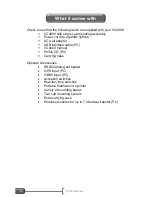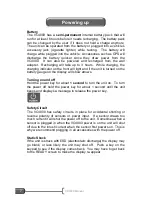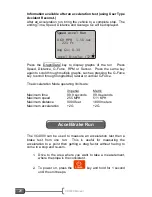
A
cc
id
en
t
R
eco
n
U
se
VC4000 Manual
16
Figure 8: Dual cups mount
Mounting Flat and Level
If mounting flat and level, it is not necessary to use the
Z axis
for
calculating the vector sum. In fact, using the Z axis may introduce
some error due to vertical vibration caused from the road surface.
Either use X or X+Y summation if mounting flat and level. Use the
bubble levels on the front and left side of the VC4000 to level it, if
your vehicle is reasonably flat and level. Within 3 degrees of level is
sufficient to get accurate data. The VC4000 must be
parallel
to the
road surface both longitudinally and laterally. If using X only
summation, the VC4000 must be positioned parallel to the road
surface and the X axis in line with the front to back line of the vehicle.
Slope of the road and zero adjusting
When performing a test the VC4000 will
zero adjust
itself for the
slope of the road when you press the Braking or Acceleration key.
If the Braking or Acceleration key is pressed on the same slope, the
Average G-Force (Drag Factor) given by the VC4000 will include the
grade of the road. When vehicle testing or measuring Drag Factor
the road surface does not have to be level; however, you must press
the Braking key at the same slope you are testing. This will allow
the VC4000 to compensate for slope and all data will be accurate.
When measuring coefficient of friction (
) you must zero adjust on a
level surface. The vehicle must be at a complete stop during zero
adjusting.
Содержание VC4000
Страница 1: ......
Страница 108: ...Specifications VC4000 Manual 104 This page intentionally left blank ...
















































